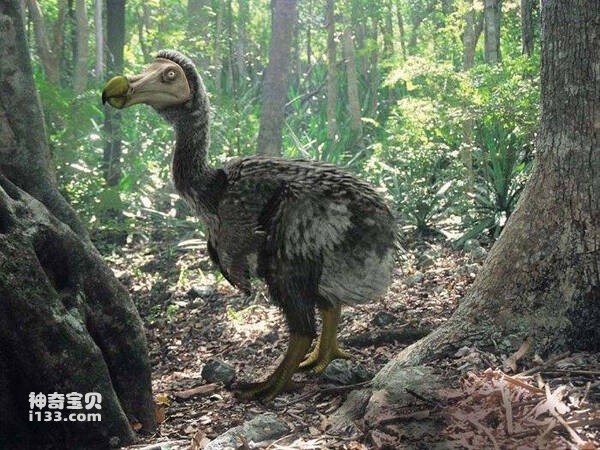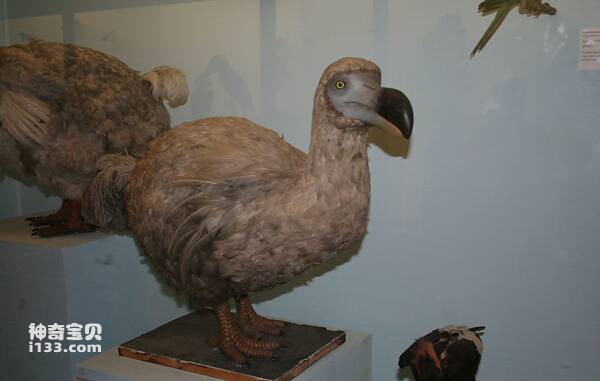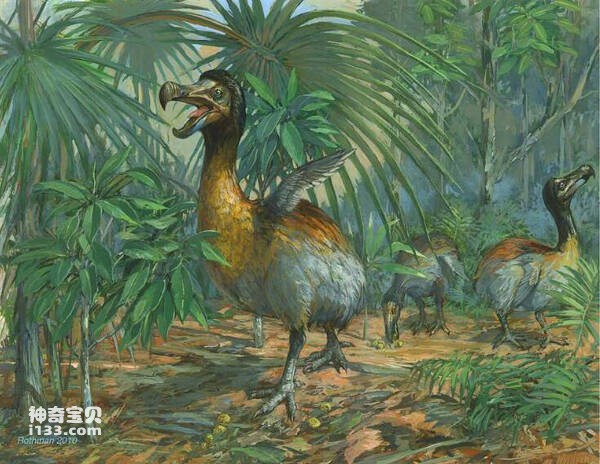Raphus cucullatus,Dodo
IUCN
LCBasic Information
Scientific classification
- name:Raphus cucullatus,Dodo
- Scientific Name:Raphus cucullatus,Dodo
- Outline:Landfowl
- Family:
Vital signs
- length:70-90CM
- Weight:17-28kg
- lifetime:No textual research information is available
Feature
It was the first recorded extinction of a species
Distribution and Habitat
The dodo was once native to the Republic of Mauritius, an island nation in eastern Africa, about 3,943 km southwest of the Indian Ocean. It is about 800 km from the east coast of Madagascar and 2,200 km from the African mainland.
It's a forest-dwelling bird. Given their tropical location, the island of Mauritius enjoys a warm climate, although the influence of the ocean moderates temperatures. Due to the combination of high humidity and warm temperatures, the island of Mauritius has a variety of biomes such as plains, hills, lush vegetation flourishing forests and coral reefs along the coast. The dodo, however, makes its home mainly in the forest.
Appearance
What people know about what the dodo looked like is based on several sources. There are diaries and writings of sailors and captains who landed on Mauritius in the 16th and 17th centuries, as well as paintings by the few who lived to witness them (although it is not even possible to prove that all the artists who made the dodo saw the transitional dodo in person); Some fossils have been unearthed on the island and are kept in the British Museum; The University of Oxford preserved a foot and a beak, but there are no complete specimens of the specimen (the model in the museum is based on partial remains). From these records and pictures, scientists and ornithologists pieced together a fairly detailed composite picture of the dodo.
The size of the dodo is comparable to that of the swan, and it also has a marked sexual dimorphism. Male birds can be up to 90 cm long and weigh up to 28 kg; The female is only 70 cm long and weighs only 17 kg. The plumage is brown or gray, and the female is
Details
The Dodo (Raphus cucullatus) is one of the most famous extinct animals besides dinosaurs. It is also the only extinct bird of Mauritius to be designated as the national bird.

Sailors who landed on Mauritius found much pleasure in watching the clumsy dodo's behaviour. One story tells of a dodo who tried to escape in a hurry. When it tries to escape, (wiggling might be a more accurate term), it drags its belly to the ground, slowing itself down. Their wings were small and too weak to lift the dodo off the ground because they couldn't fly. But for the most part, the dodo has been described as a lazy, rather stupid animal. It has little to no defense against predators, other than its large beak, and if that happens, it can deliver a "scary bite," such as a threat to itself or its young.
Scientists' ideas about the dodo's diet are largely based on guesswork. Some sailors reported seeing dodos wading into pools to catch fish. They were described as "strong and voracious" hunters. What really attracts visitors to Mauritius, however, is that the dodo seems to eat stones and iron regularly and without any problems. Presumably, these rocks aid digestion.

Details about dodo mating and incubation periods are unclear. Several people have described the dodo's nest as being in a bed of grass deep in the forest. There, the female will lay an egg, which she will protect and raise. One sailor recounted hearing the call of a young dodo in its den, which sounded "like the call of a gosling". Breeding begins in August (green line), food shortages during stormy summers (yellow line), and moulting begins in March (red line). Laying eggs and growing rapidly, as with many modern birds living on the island, the dodo's breeding season seems to start around August. After the chicks hatch, they quickly grow to an almost adult size, reaching sexual maturity before the stormy summer begins. After summer, moulting begins around March to replace wing and tail feathers. By July, the moulting is complete, which is when the dodo has a chance to fatten up and get ready for the start of the next breeding season.
The dodo has had a great influence on culture despite its short co-existence with humans, appearing both on official heraldry and in literature: there is a dodo on the left side of the shield in Mauritius. Its history of discovery and extinction, its strange appearance, and the idea that it was a silly bird have made the dodo an important cultural reference and has been mentioned in many arts.

Many animals have become extinct due to human activity, but the dodo was the first recorded extinction, which was recorded in 1598 when a ship went off course on its way to the East Indies and discovered the island of Mauritius. The Dutch crew of the ship recorded the dodo, which is believed to be the earliest recorded sighting of the bird. It was not seen again for less than 200 years, and the exact date of the dodo's extinction is still uncertain, but most scholars agree that it was in 1681, and some studies have suggested that the dodo became completely extinct in the early 18th century.
There are three main theories about the extinction date of the dodo: 1662, 1681, and between 1688 and 1715, and even in the most distant case, the dodo encountered humans and became extinct in less than 120 years. This short period of time coincided with the arrival of humans and other species on the island of Mauritius. From this, it can be inferred that alien species did have a large impact on the extinction of the dodo.
In August 2016, the world's most complete dodo bone was auctioned for $4.4 million.
Protect wild animals and eliminate wild meat.
Maintaining ecological balance is everyone's responsibility!








